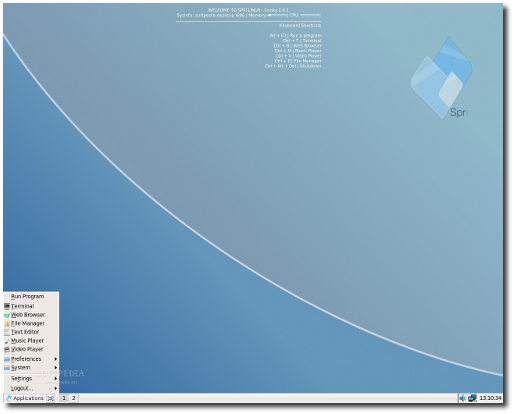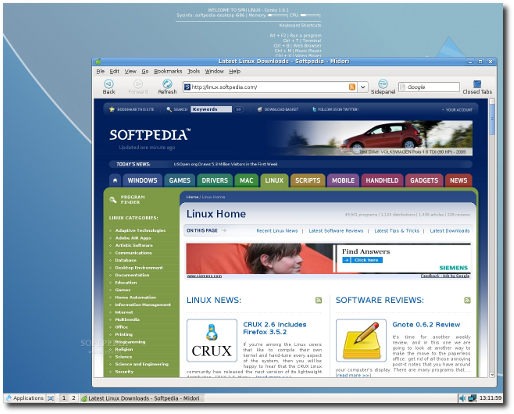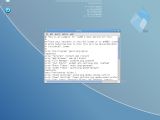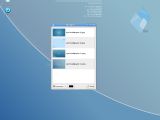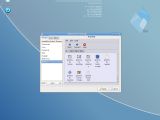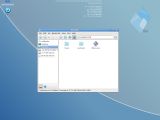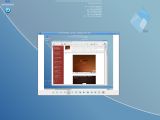Spri Linux is a lightweight Ubuntu remix that gears toward speed and uses the IceWM window manager to achieve that goal. Clearly, IceWM requires less resources than its bigger siblings, like GNOME and KDE, it's even lighter than XFCE, in fact you could probably put it in the same category with LXDE. Having that Ubuntu base means that Spri Linux benefits from the well-known hardware compatibility, package management and support that the popular distro has amassed in time.
The Spri Beta 2.11 version is based on Ubuntu 9.04 (Jaunty Jackalope) and comes in a 340MB ISO file, quite close in filesize to the Lubuntu beta that we wrote about last week. Nothing special kernel-wise, it's the default 2.6.28-15 kernel that is in Ubuntu right now, and IceWM's version is 1.2.37.
While booting the operating system, you will definitely notice the lack of a splash screen, usplash or otherwise, and probably some errors about kernel wlan modules. The installer is the same one used in Ubuntu, I won't give you any special cues on the installation process itself, because it really can't get much easier than it already is.
The login screen is provided by slim, and it's pretty simple and elegant. The default IceWM desktop is also simple, themed in light colors, and it features a Conky instance centered at the top of the screen. Conky is used to display the memory and CPU usage, and lists the default keybindings for opening the terminal, web browser, media players and file manager.
Because of the small quantity of preinstalled software, the Applications menu is quite simple and small. The Logout button will throw you off a bit, since it's a button by itself, but you can also get the other shutdown options in a menu by using the small arrow at the right of this button. I think that people shut down their computer more often than they log off, so a Shutdown button would be more useful. New users will have a problem with IceWM's menu, because it doesn't automatically update when installing new applications, these will have to be added manually. The same application menu is available when right-clicking the desktop, which may be useful, but it also means that you can't create launchers or paste files on the desktop too easily – another rough spot that a beginner would face.
The My Ethernet connection was detected on boot and Wicd picked up its details without any problems. I am a fan of Wicd, because it's a great, lightweight network manager that hasn't gotten too many dependencies. A lot of wireless WPA supplicant drivers are available, but, as the test computer doesn't have a wireless card installed, I wasn't able to test if they worked.
You might question the inclusion of Midori as the default web browser, but this application appears to be quite evolved since the last time I used it. Flash works out of the box and the page rendering wasn't visibly flawed on any of the pages I visited. Midori updates will be available pretty often, since apt is configured to use the Midori PPA.
The preinstalled desktop utilities include the same volume-control program that is included in Ubuntu 9.04, using pulseaudio as a backend, and a power-management configuration tool that can configure the screensaver and standby timeouts. Alongside those, there are a few distribution-specific utilities, like Nitrogen for setting the wallpaper, an IceWM appearance editor and a shortcut that allows you to hand-edit the Conky configuration file.
Under the System menu, there is a shortcut that opens the menu configuration file for editing, it has a syntax simple enough, so you can do small tweaks and changes without reading any documentation, and another that allows you to modify a script that runs the startup applications. Grouped together below you'll find Synaptic and Jockey, the restricted driver managers, which picked up the Nvidia 5500 video card immediately and offered two drivers to choose from. Further down below, there is the Date/Time configuration tool, the Users and Groups manager and an NFS/Samba share configuration tool. All of them are the ones used in Ubuntu, so you shouldn't encounter any showstoppers using them.
I'm not a big menu user, in fact I'm not much of a mouse user, so it was nice to see that gmrun was included in the default install. Gmrun is a run-box application that springs up when you hit Alt+F2, and it features Tab autocompletion and history. What I didn't find in the menu, but it's nice to see that's included, was GPicView, a minimal image viewer that resembles the one included in Windows XP. I didn't particularly understand the use of the message-of-the-day style cowsay + fortunes script that appeared every time you opened a terminal.
The window-resizing behavior is quite peculiar, the window doesn't anchor itself on one side and grow from the other when resizing it horizontally or vertically, instead it grows from both sides. When you are used to windows acting differently, you will find that behavior funny to say the least.
PCManFM is a no-thrills file manager, it allows you to manage your files graphically, but you won't find any advanced functions in it. It's lightweight and it does its job.
Overall, Spri Linux has the potential of being a good lightweight distribution, but it needs more polishing, and it would be useful to choose a clear aim: it wants to be truly lightweight, or more user-friendly.
Here are some more screenshots of Spri Linux Beta 2.11:
If you want to test Spri Linux Beta 2.11 yourself, download it right now from Softpedia.
 14 DAY TRIAL //
14 DAY TRIAL // 